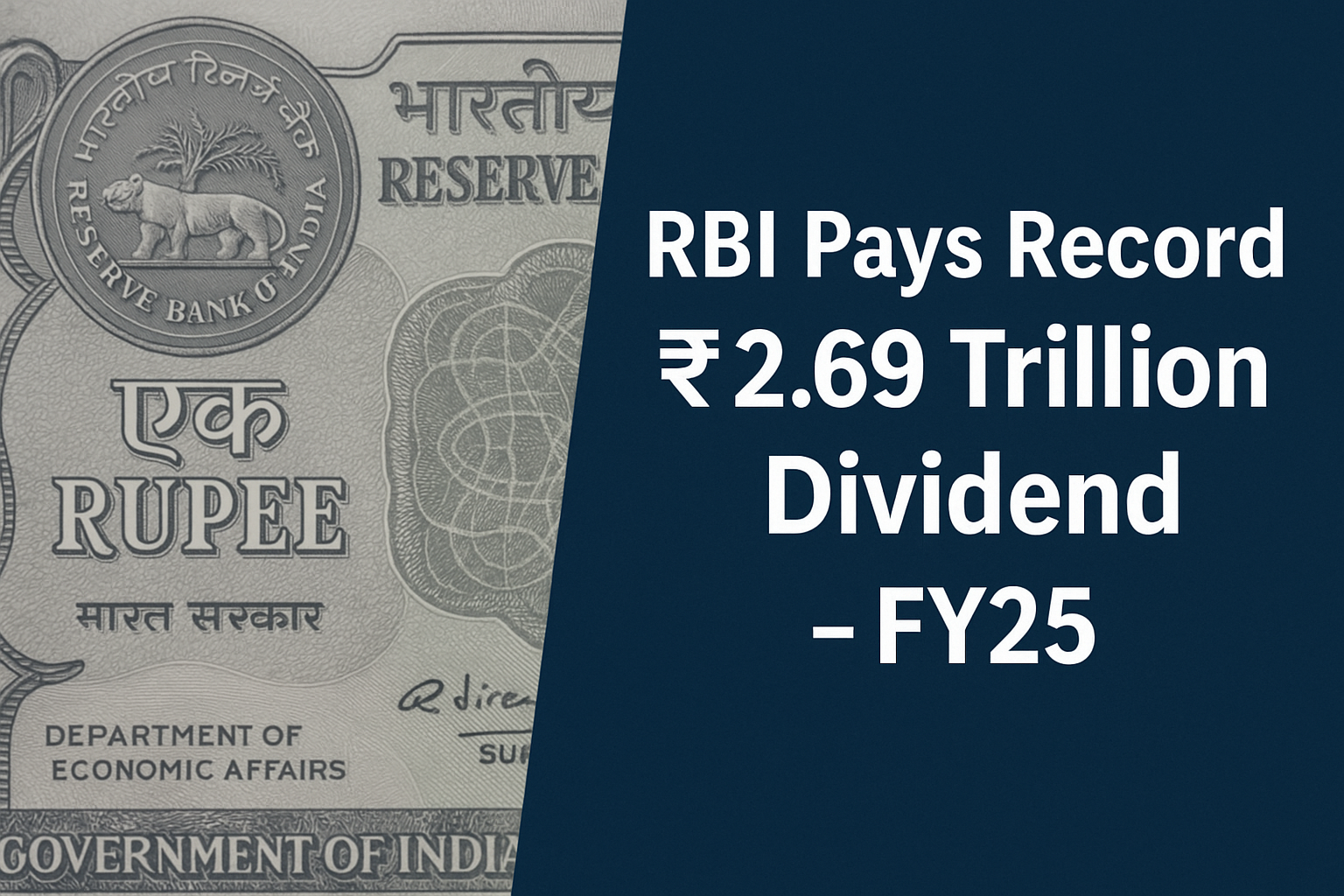Announcement: Lorem ipsum dolor sit amet, consectetur adipiscing elit. Donec et quam blandit odio sodales pharetra.
RBI’s Record ₹2.69 Trillion Dividend: A Windfall That’s Not So Large After All
RBI paid a record ₹2.69 trillion dividend for FY25 — but it’s still lower than expected due to a higher risk buffer. Here’s how this shapes India’s fiscal math, defence spending, and capital expenditure outlook.

Table of Content
Highest Rbi Dividend, But Lower Than Expected
Normally, towards end of May, each year, RBI declares transfer of surplus (dividend) to the central government. The quantum of transfer is determined based on the surplus generated by the RBI from its activities and investments. Apart from the costs, the RBI is also required to make a provision for Contingency Risk Buffer (CRB) to guard financial markets against potential volatility risks. This year, the expected RBI dividend was ₹3.0-3.5 trillion. However, RBI decided to increase the CRB from 6.5% to 7.5%; and pay out ₹2.69 trillion as dividend to the centre.
| Financial Year | RBI Dividend (₹ in Crore) | YOY Change (%) |
| Fiscal Year 2017-18 | 50,000 | |
| Fiscal Year 2018-19 | 1,76,051 | 252.10% |
| Fiscal Year 2019-20 | 57,128 | (67.55%) |
| Fiscal Year 2020-21 | 99,122 | 73.51% |
| Fiscal Year 2021-22 | 30,307 | (69.42%) |
| Fiscal Year 2022-23 | 87,416 | 188.44% |
| Fiscal Year 2023-24 | 2,10,874 | 141.23% |
| Fiscal Year 2024-25 | 2,68,590 | 27.37% |
| Data Source: RBI | ||
What Are Implications Of The Record Dividend By RBI
The central government, in its Union Budget for 2025-26, had pegged the sum of RBI dividends to government and the PSU bank dividend to government at ₹2.56 trillion. With RBI now paying ₹2.69 trillion and PSU banks pegged to pay around ₹25,000 crore, the actual amount under this header would be 14.8% above budget estimates. That is not a substantial largesse, although it will allow the RBI to maintain the fiscal deficit at the targeted 4.8% of GDP. However, with the current border situation, the government is likely to see higher defence spending this year. That means, despite the large dividend, the central government may not have much left to boost capex spending. That is something private sector may have to handle on their own!
Where Does RBI Earn Its Revenues From?
Broadly, there are 5 broad sources of income for the RBI in any financial year.
- RBI makes a spread from buying and selling dollars. In FY25, dollar buying was done at an approximate level of ₹83-84/$ and selling was at ₹86-87/$. This spread is one of the key sources of revenues for the RBI in any financial year, including in FY25.
- RBI also does repo and reverse repo operations to manage liquidity and funding costs in money markets. This is normally done at a market maker spread; by buying at a lower price and selling at a higher price. This spread generates revenues for RBI.
- RBI holds forex reserves of nearly $690 billion and these funds are parked in global sovereign bonds. US 10-year bonds are currently paying about 4.5% yield.
- Revaluation of assets; largely gold and other currencies, is a key contributor to RBI surplus. In the current year, gold revaluation has generated a big boost to the RBI.
- Lastly, there is the seigniorage that RBI earns on currency printing, which is the difference between cost of printing a currency note and its stated face value.
RBI has been relatively conservative in paying out dividends this year. Considering the mounting even risks, that looks like a step in the right direction!
Comments